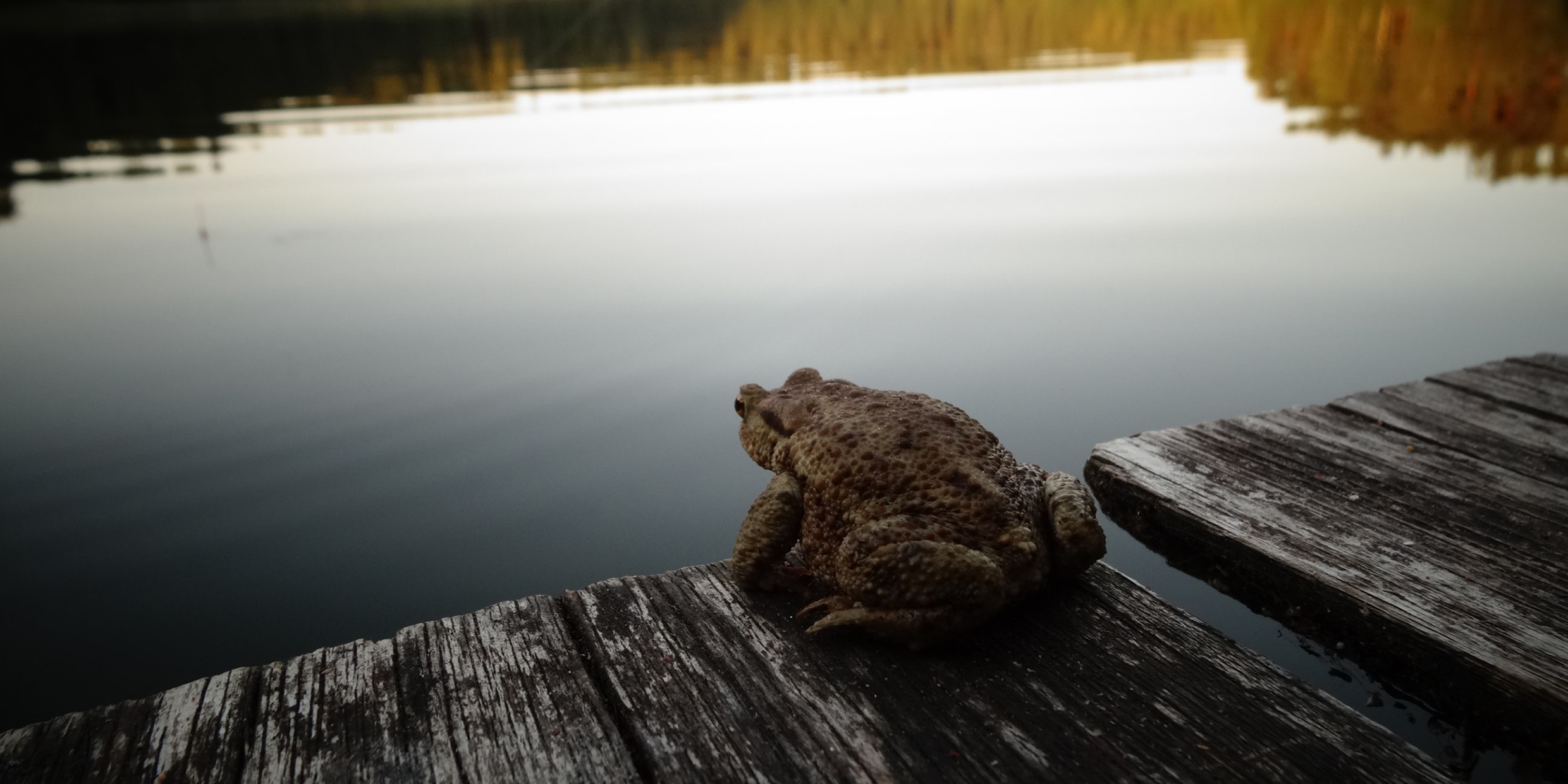Originally published 29 February 2000
There was wind in the willows as the Water Rat and the Mole rowed their boat along the river. They were on their way to visit Toad of Toad Hall.
“It been a long time since we’ve seen Toady,” said the Rat.
“It’s been a long time since I’ve seen any toad,” observed the Mole.
“Whatever can be the problem?” wondered the Rat.
“Or frogs. Or newts. Or salamanders. The river bank is very quiet.” The Mole shook his head.
“We must ask Toad what’s happening to the amphibians,” said the Rat, his brow furrowed with concern.
Just then they rounded a bend in the river and saw Toad Hall, a handsome, dignified old house of mellowed red brick. They glided up to the landing and the Mole shipped the oars.
“Toad is usually here to greet us,” he said, looking about.
“He is, indeed,” puzzled the Rat. “But look, here comes the Badger shuffling down the lawn. Halloo, Badger.”
“Well, Ratty, my dear little man,” exclaimed the Badger. “What brings you and Mole to Toad Hall?”
“To see Toady, of course,” said the Rat.
“I’m afraid that will be impossible,” responded the Badger. “Old Toad has gone from bad to worse. In fact, he passed away just yesterday.”
“Oh dear!” said the Rat and the Mole together. Then the Rat added: “The Mole and I were just observing that all the amphibians seem to be disappearing.”
The Badger gravely lowered his brow. “And not just here along the river. Disappearing amphibians is a worldwide problem. From Michigan to Australia. From Britain to Costa Rica. In the polluted environs of cities and in pristine nature reserves. Frog populations, especially, have declined over the past decade. And there seems to be more deformities among the frogs that survive — extra legs, that sort of thing. Scientists are all a‑tizzy, wondering what’s up.”
“Oh, you know those scientists,” sniffed the Mole. “They are always making mountains out of molehills. If they blow up a crisis, it helps get funding for their research. ‘The Silence of the Frogs.’ ‘Croaking Amphibians.’ That sort of thing. It makes good press.”
“I used to be skeptical, too,” said the Badger.
The Mole continued: “Animal populations go through natural cycles. Boom and bust. Growth and collapse. We learned about that sort of thing in school. The amphibians will recover.”
“We’ll see, we’ll see,” mused the Badger. “Within the last few years, scientists have reached a consensus that the decline is real. They considered the possibility of a natural cycle, but now they are convinced that something global and catastrophic is truly happening.”
“Whatever could be the cause?” asked the Rat.
“No one knows for sure,” replied the Badger. “It is well-known that without fur or feathers to protect them, amphibians are especially sensitive to ultraviolet radiation from the sun. The decline in the ozone layer in the atmosphere is letting in more UV rays. Contamination of streams by agricultural chemicals is another possible cause. Some frog populations have been harmed by parasites and pathogens, but perhaps the animals’ natural resistance has been weakened by other factors.”
The Rat scratched his head: “Anyone who lives along the river knows that amphibians are the least resilient to stress. Whatever is happening to the frogs may be in store for the rest of us.”
“Amphibians are a key part of the food chain,” said the Badger. “They help control insect populations. They supply food for fish, snakes, birds, and mammals, and keep the streams clear by eating algae. If the amphibians go, life along the river will get very quiet indeed.”
“I’m still skeptical,” sniffed the Mole.
“Time will tell,” said the Badger. “A Declining Amphibian Population Task Force, made up of a hundred groups of scientists worldwide, is studying the amphibians’s decline. In the United States, the National Science Foundation has begun seriously funding amphibian studies. The missing frogs, toads, newts and salamanders may be nature’s way of telling us that we are making a mess of the environment.”
The Rat and the Mole made their good-byes to the Badger and got back in their boat. As they rowed up the stream, the Rat took note of plastic bags caught in the bankside reeds, floating drink cans that bumped against the boat, and the alga scum that coated the blades of their oars. He wondered about all the invisible contaminates in the global environment, such as chlorofluorocarbons that erode the ozone, even in places ostensibly unspoiled.
“Badger’s such a worry-wart,” said the Mole.
“Hmmm,” said the Rat.




Hi Chet. That would be frog chytrid fungus attacking the skin that they breathe with. Spreads easily by absorbing on waterfowl feathers from pond to lake to stream and by foot traffic from sundry habitants of the meadowlands. Enjoy your morning walk , nevertheless.